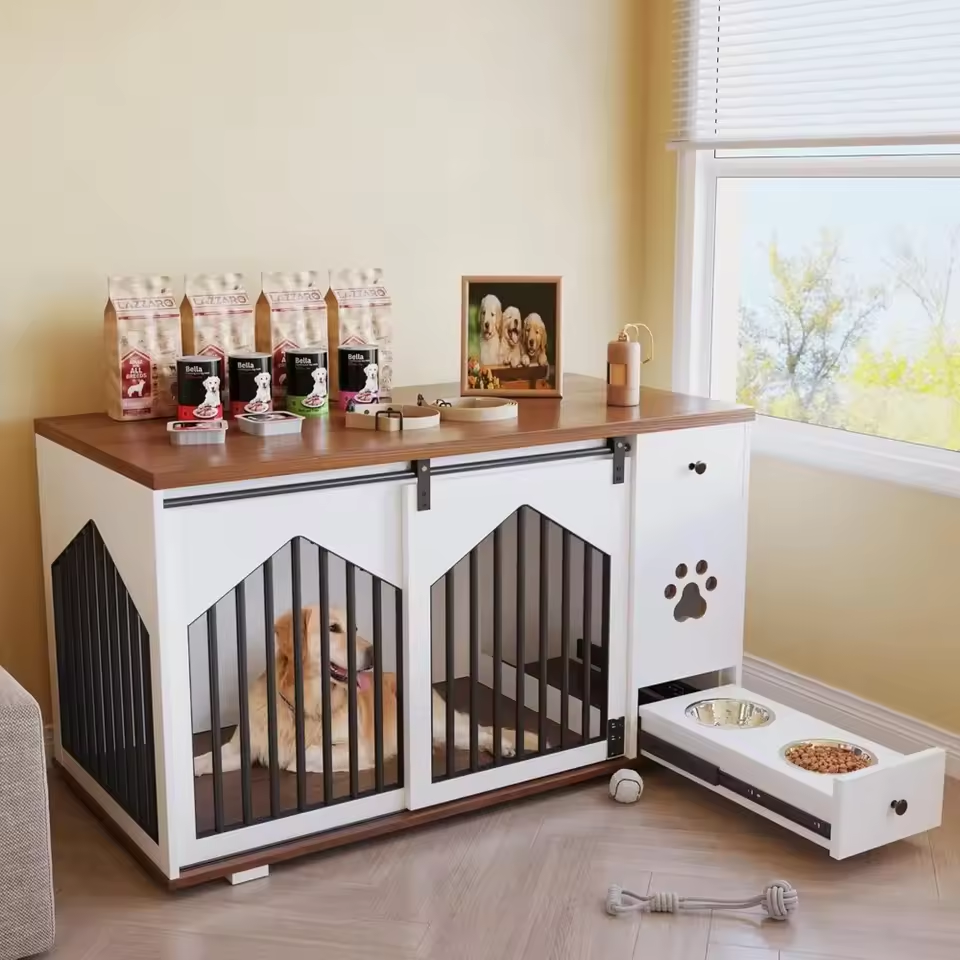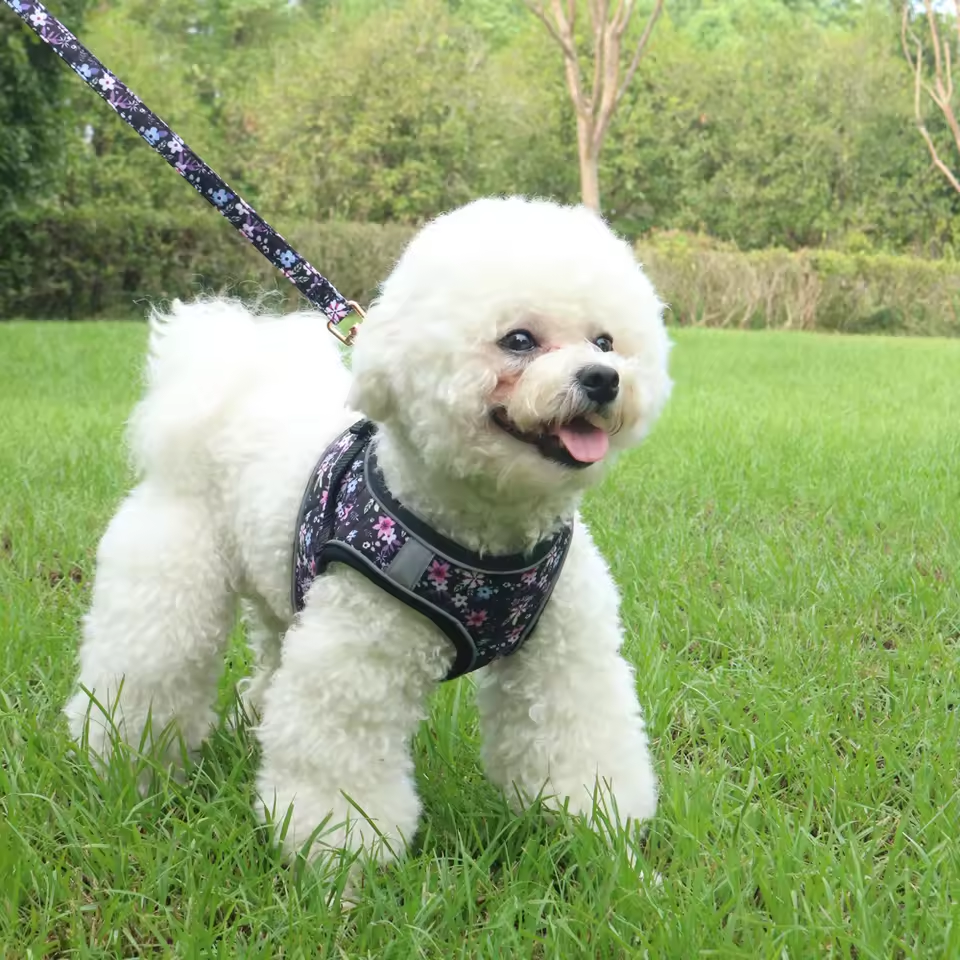Crate training is a widely recommended practice for dog owners. It can offer a variety of benefits, including promoting housebreaking, providing a safe space for your dog, and even aiding in travel. However, for dogs with separation anxiety, the idea of crate training can be daunting. Separation anxiety is a common condition in dogs, characterized by distress when left alone. So, how can crate training be used for dogs with this very issue?
The key lies in creating a positive association with the crate. This will transform it from a place of confinement into a comfortable and secure den that your dog enjoys spending time in, even during your absence. Here’s a step-by-step guide to crate training a dog with separation anxiety:
Contents
Choosing the Right Crate
The first step is selecting an appropriate crate size. It should be large enough for your dog to stand up comfortably, turn around, and lie down in a relaxed position. A crate that’s too small can be uncomfortable and exacerbate anxiety. Conversely, a crate that’s too large might not provide the sense of security some dogs crave. Consider using a divider panel if you have a growing puppy to adjust the space as they mature.

Making the Crate a Happy Place
Once you have the crate, focus on creating positive associations. Leave the door open and scatter treats or favorite toys inside. Encourage your dog to explore the crate at their own pace. You can even feed your dog their meals inside the crate to further build positive connections.

Crate Games and Relaxation Techniques
Playing crate games can be a fun way to make the crate inviting. Hide treats or toys inside and let your dog sniff them out. This creates a rewarding experience and mentally stimulates your dog. Incorporate relaxation techniques like playing calming music or using anxiety-reducing sprays or pheromones near the crate.

Gradual Crate Closure
Once your dog is comfortable entering the crate on their own, begin practicing closing the door for short periods. Start with just a few seconds and gradually increase the duration as your dog tolerates it. Reward calm behavior with praise or treats. Avoid using the crate as punishment, as this will create negative associations.
Building Up Alone Time
With successful short-term crate stays, gradually introduce periods of alone time. Start with just a few minutes and work your way up. It’s important to not rush this process. If your dog shows signs of anxiety, like whining or barking, take a step back and shorten the duration. Remember, consistency is key.

Management and Desensitization
Separation anxiety is often triggered by certain cues, such as putting on shoes or picking up your keys. To manage this, practice these actions throughout the day but don’t always follow them up with leaving. This desensitizes your dog to these cues and reduces their association with departure.
Enlisting Professional Help
If your dog struggles significantly with crate training or separation anxiety, consider consulting a certified professional dog trainer or animal behaviorist. They can provide personalized guidance and address any underlying anxieties your dog might have.

Creating a safe and comfortable home environment for the dog
Bringing a dog into your home is an exciting adventure. But alongside the wagging tails and playful nips comes the responsibility of creating a safe and comfortable environment for your furry companion. Here are some tips to ensure your home transforms into a doggy paradise:
Dog-Proofing Your Domain
Think like a curious canine! Get down on their level and explore your home from their perspective. Address potential hazards lurking at paw-level. Electrical cords, toxic houseplants, and cleaning supplies should be secured or stashed away. Small objects that could be choking hazards should be kept out of reach, especially for puppies.
A Designated Den
Every dog deserves a safe space to retreat to when they need a break. This could be a crate, a comfy dog bed tucked away in a quiet corner, or a playpen. Equip this space with cozy bedding, favorite toys, and fresh water. This designated den becomes a sanctuary for your dog during storms, loud noises, or moments when they feel overwhelmed.
Delicious Decisions: Food and Water Stations
Locate food and water bowls in a quiet, easily accessible location. Choose bowls made from stainless steel or ceramic, which are easy to clean and less likely to harbor bacteria. Select a bowl size appropriate for your dog’s breed to avoid uncomfortable neck strain. Fresh, clean water should be readily available at all times.
Floor Fashion with Function
While plush carpets may seem like a luxurious haven for your dog, consider opting for easier-to-clean surfaces, especially in high-traffic areas. Accidents happen, and you’ll want flooring that allows for easy cleanup. However, strategically placed throw rugs can provide cozy spots for your dog to lounge on.
The Importance of Indoor Play
Even with daily walks, playtime is essential for a dog’s physical and mental well-being. Rotate a variety of safe and stimulating toys to keep your dog engaged. Interactive puzzles, chew toys, and balls can provide hours of entertainment. Schedule playtime throughout the day to expend energy and prevent boredom-induced destructive behavior.
Harnessing the Power of Positive Reinforcement
Positive reinforcement is key to training your dog and creating a harmonious household. Reward good behavior with treats, praise, or belly rubs. This builds trust and strengthens the bond between you and your furry friend. Avoid punishment-based training methods, which can create fear and anxiety.
Keeping Calm During Chaos
Guests, loud noises, or unfamiliar situations can be stressful for dogs. Provide a safe space for your dog to retreat to when overwhelmed. Alternatively, create a calmness routine, such as offering a long-lasting chew toy to redirect attention during chaotic moments.
By following these tips, you can transform your home into a haven for your dog, ensuring their safety, comfort, and overall well-being. Remember, a happy dog makes for a happy home!
Additional Tips for Success
- Exercise: Ensure your dog gets plenty of physical and mental exercise before crate time. A tired dog is a more relaxed dog.
- Routine: Establish a consistent routine for your dog, including crate time. This predictability can help reduce anxiety.
- Safe Space: Make sure the crate is placed in a quiet, draft-free area of your home. Avoid high-traffic areas that might be stimulating.
- Comfort Items: Provide your dog with a comfy bed, a favorite toy, or a worn piece of your clothing for comfort while crated.
Remember: Patience is crucial when crate training a dog with separation anxiety. Don’t get discouraged by setbacks. Celebrate small victories and take a step-by-step approach. With time, positive reinforcement, and consistent practice, your dog can learn to associate the crate with a safe and secure haven, even when you’re not around.


